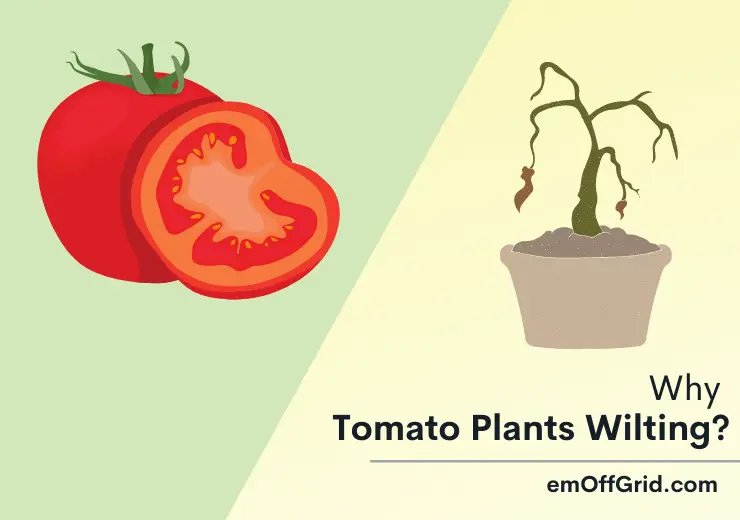A tomato plant is one of the simplest and easiest plants to grow for any individual. But you may often see that your tomato plant suddenly starts wilting.
So, what are the Top 5 Causes and Remedies for wilting a Tomato Plant?
Nothing is more disheartening for a home vegetable gardener than that the plant is fully laden, and just when you are ready to enjoy the tomato harvest, the plant suddenly wilts and dies.
You start wondering what suddenly went wrong and how you could have saved the plant?
There can be many reasons why your tomato plants may wilt, and we will discuss them in this article.
You will also learn about how to identify the cause and some simple remedies to prevent tomato plants from wilting, which will help you improve your vegetable garden.
Contents
What Is Wilting Of Plants?
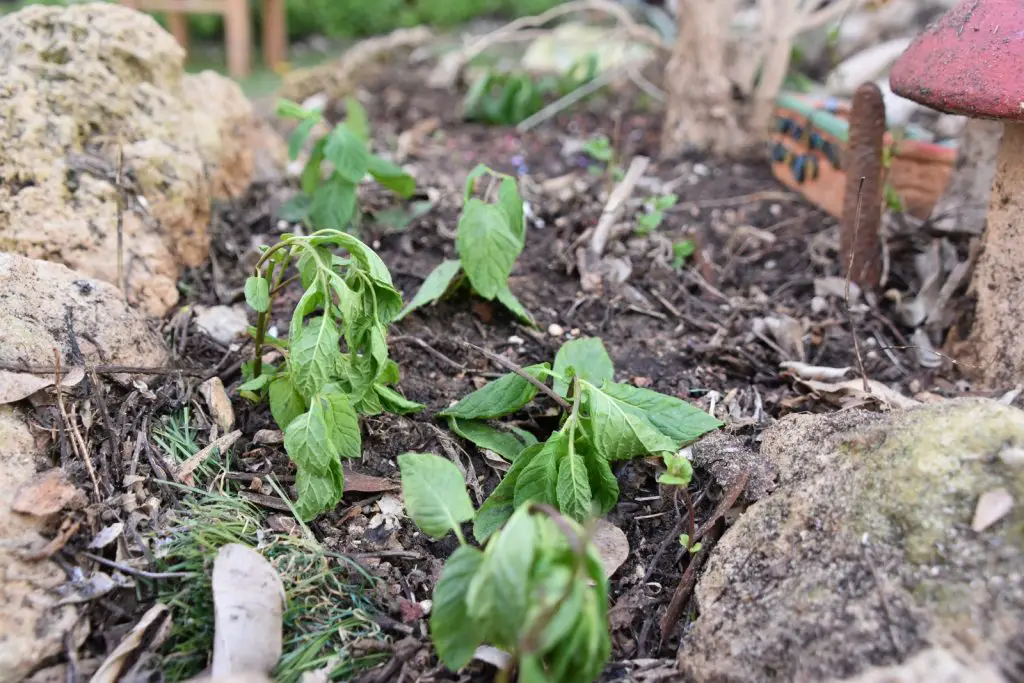
In simple terms, wilting means that the non-wooden portion of the plant has lost its rigidity, and it has folded, curled or has fallen. Wilting can be classified into three types:
- Temporary Wilting – It is the temporary loss of a plant’s stiffness during noon when the sun is at its peak.
- Incipient Wilting – This refers to the loss of rigidity in a plant that occurs in the soil with adequate moisture and is mostly related to excessive water loss due to perspiration.
- Permanent Wilting – It is that state of the plant when they do not regain their rigidity even after providing a suitable atmosphere.
Main Causes Of Tomato Plants Wilting
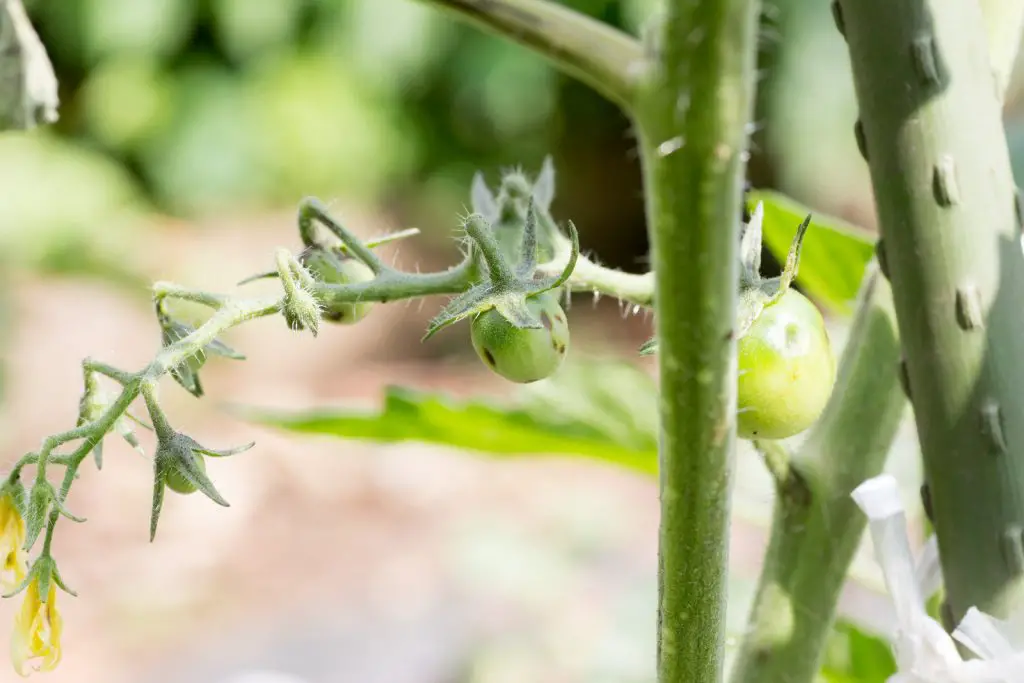
Tomato plantation is so famous amongst home gardeners that you can find a tomato plant in 9 out of every 10 gardens.
However, growing a tomato plant is quite challenging for most home gardeners as many things can go wrong with tomato plantation.
Bacterial attacks, yellow leaf diseases, leaves eaten by worms, blossom end rot, fruit cracking, sunscald, etc., are some of the issues with tomato plantation. But the most common problem faced by a home gardener is the wilting of tomato plants.
Wilting can be easily identified with the downward drooping of the leaves. There can be several factors that led to this condition of the tomato plant. Here are Top 5 causes, symptoms, and remedies for wilting of tomato plants.
Lack Of Water
When the stems and leaves of the tomato plant get dehydrated, they wilt. If the weather is hot and dry, the plant wilts temporarily because the leaves and stems lose water quicker than the plant can replace it.
This indicates that the amount of water in the soil is not enough to supply the plants.
The good part about this temporarily wilting is that the plant will rapidly revive when it receives water. Tomato plants need a minimum of 2 inches (5 cm) of water in a week, either by manual watering or through rainfall.
Symptoms:
- The lack of water in tomato plants can be easily identified with the droop in plants.
- The leaves have a thin, dry, and paper-like appearance.
- Additionally, you can see that the soil around the plant must have become dry.
Remedies:
- If wilting is caused by a lack of water at the roots, gently re-water the soil or compost. The plant will revive as soon as it receives water.
- It is a good idea to cover the surrounding soil to retain the moisture in the soil.
Keynote:
- Apply water directly to the soil around the base of the plant. Avoid splashing too much water onto the leaves.
- Do not water the plant at all once. It is better to divide and give water several times during the day.
- If you use an overhead spray to water your tomatoes, water the plants in the morning to prevent problems related to foliar disease.
Bonide 811 Copper 4E Fungicide 16oz
- Control fungus and disease in your garden with Captain Jack’s Liquid Copper Fungicide Concentrate!
- Approved for organic gardening, this fungicide is suitable for the production of organic produce and can even be used up until the day of harvest!
- Copper Fungicide effective in the control and prevention of a wide range of plant diseases. Listed common garden diseases include blight, black spot, powdery mildew peach leaf curl and more.
Overwatering
Just like lack of water, overwatering can also cause the tomato plant to wilt. Overwatering is indicated by droopy plants with hydrated leaves. The soil around the plant is wet, and the oldest leaves appear yellow.
Excessive water does not drain off quickly, and the soil remains wet and muddy for a longer period. The roots are waterlogged, which stops the supply of water to the stem and leaves. This may damage the roots, and the plant may eventually die.
Additionally, overwatering produces an anaerobic environment by blocking oxygen near the roots. This will support the growth of disease-causing pathogens like bacteria and fungus.
Symptoms:
- Overwatering is indicated by droopy plants with hydrated leaves.
- Leaves will appear to have some blisters due to excessive water in plant cells.
- The soil around the plant is wet, and the oldest leaves appear yellow.
Remedies:
- Stop watering the plant till the top 2 inches of soil is completely dry, which may take a couple of days.
- In case the plant is in a pot, you may look out to clear the drainage or take the plant out of the pot and partly replace the soil.
Pro Tip:
Tomato plants need consistent moisture, and they cannot survive in too dry or too wet environments. Water stress results in issues such as tasteless fruit, blossom end rot, cracking, etc.
Caused By Fungus Or Virus
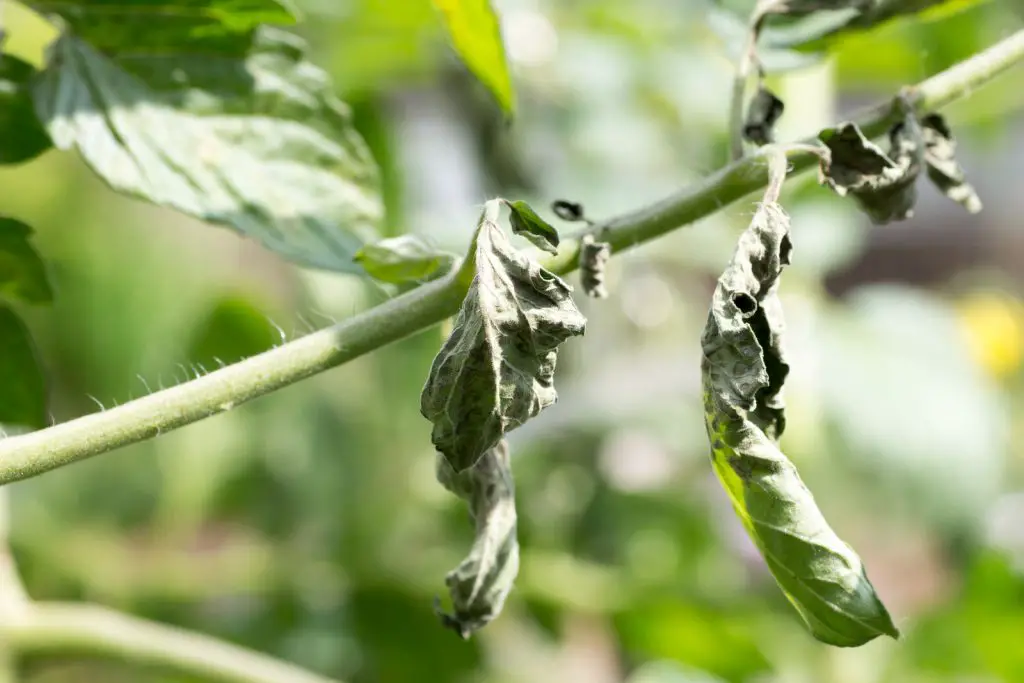
Tomato plants may also wilt due to a variety of viral, bacterial, and fungal infections.
These infections are contagious and can spread very rapidly throughout your crop when environmental conditions are favorable.
There are two common fungal diseases found in tomato plant:
- Fusarium Wilt: This type of fungal infection is mostly found in areas having warm and moist climates. The fungus grows in the soil and enters the plants through the roots.
- Verticillium Wilt: It is more common in the northern hemisphere, where the soil is cold and moist. Unlike fusarium wilt, verticillium wilt does not kill the tomato plants but causes a drastic decrease in vigor and production.
Symptoms:
- The color of the leaves changes to brown and may curl upwards.
- You can observe some clusters of small black spots on the leaves.
- The growing portions of the plant will appear rotten and die.
- You can observe white mold on the soil around the base of the plant.
- Lumps with ring-shaped markings can be found on both green and ripe fruit.
Remedies:
- Unfortunately, there is nothing you can do if this infection has already attacked your plant. The only option is to destroy the entire crop.
- Alternatively, you must use improved hybrid seeds which are resilient to such infections. You can know about the resistant variety marked V, F, or N on the seed catalogs.
- Crop rotation is another way to reduce the effects of fungal wilts.
Caution:
These fungi can survive and remain alive indefinitely, so do not compost the plant, just destroy it.
Stalk Borers
Pests known as stalk borers attack a wide variety of plants, including tomatoes. The stalk borers primarily lay their eggs on grass, and when it hatches, the larvae begin boring into the grasses for feeding.
When they become too big for grass stems, they move to other plants in the vicinity.
Symptoms:
- The stalk borers can be easily identified by the cream and purple striped caterpillars crawling on the plants.
- They make a hole for entrance in the main stem. However, it is difficult to locate the hole as it is very tiny.
Remedies:
By the time you notice the attack of stalk borers, it is usually too late to save the plant. However, plants that have been injured by the stem borer may survive with proper care.
- Plants may be rescued by slicing up the stem and manually plucking out the borers.
- Tomato plants that die due to stalk borers should be pulled and destroyed to kill the stalk borers.
- You can use any weed control method to eliminate grasses. This will reduce the probability of stalk borer laying eggs and damaging the crop next time.
Influence Of Other Crops

Tomato plants may not only wilt because of water, fungus & other parasites, but the plants in the near vicinity can also affect them.
There are certain allelopathic plants like sunflowers, black walnuts, and butternut trees that produce certain substances that restrict the growth of nearby plants.
One of the most common examples is black walnut trees. They release juglone, a poisonous substance that destroys solanaceous crops, including tomatoes, potatoes, peppers, and eggplant.
Symptoms:
- The growth of tomato plants will stop.
- Plant leaves will turn yellow and curl or droop.
- Susceptible plants can even die due to the toxic release by allelopathic plants.
Remedies:
There is nothing much one can do to save a tomato plant damaged due to juglone.
- Just remove and destroy dead plants.
- Consider alternate sites away from allelopathic plants for tomato plantation.
Attention:
If alternate sites are unavailable, try to grow your tomato plant at least 20-25 feet away from walnut trees to minimize toxicity.
Some Tips For Tomato Plantation
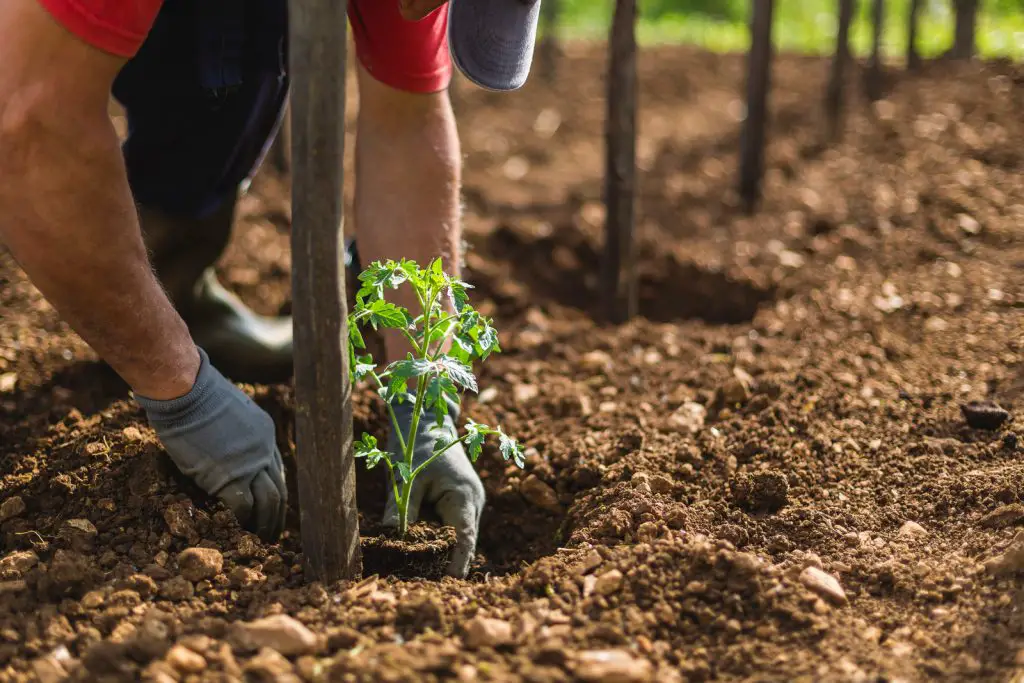
- Tomatoes need direct sunlight for proper growth. However, keeping the soil slightly moist is equally important.
- Pay attention to the amount of water at each stage of tomato plant’s growth.
- For your tomato plant to efficiently absorb nutrients, soil pH should be between 6.2 to 6.5.
- Remove the bottom leaves of every tomato plant closest to the soil. This will reduce the chance of fungal spore splash-up.
- Seed catalogs show fungal resistant varieties marked V or F, or N. Select the appropriate seed to prevent the tomatoes from such infections.
Conclusion
The most difficult part is dealing with tomato plant wilting is to find out the actual cause. So, it is important to pay close attention to any symptoms and take immediate action to deal with them.
As always, thank you for making ”Em off-grid” a part of your life! If you are reading this article of ours, thank you, and I hope you find the shared information helpful to you.
Plant Magic Plant Food 100% Organic Fertilizer
It is possible that we may have missed out on some points. Tell us from your experience about anything that you would like to add to the issue of wilting in tomato plants.
